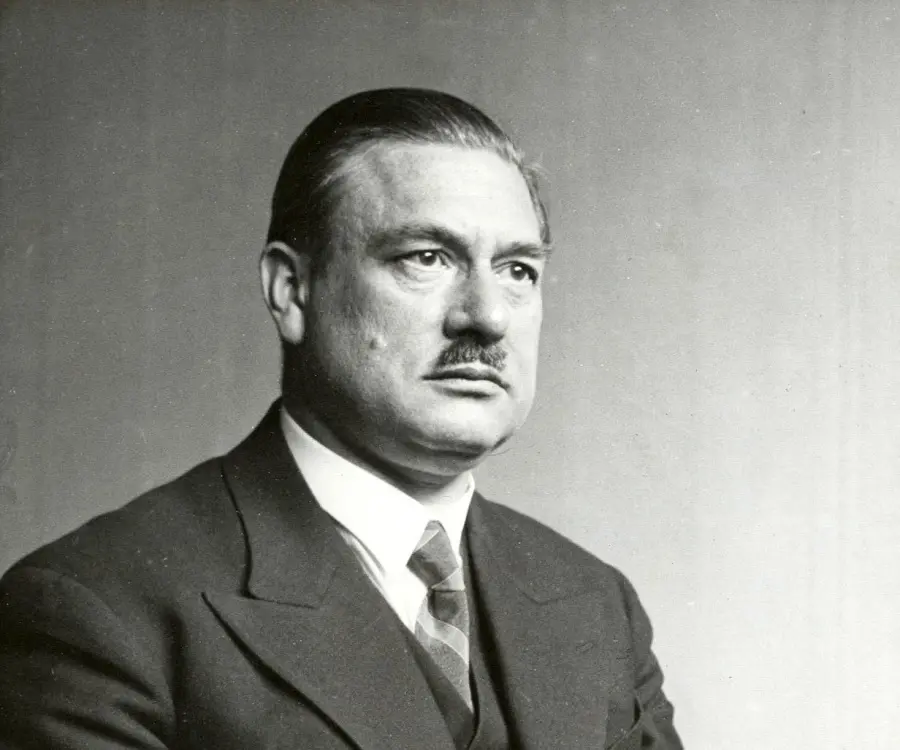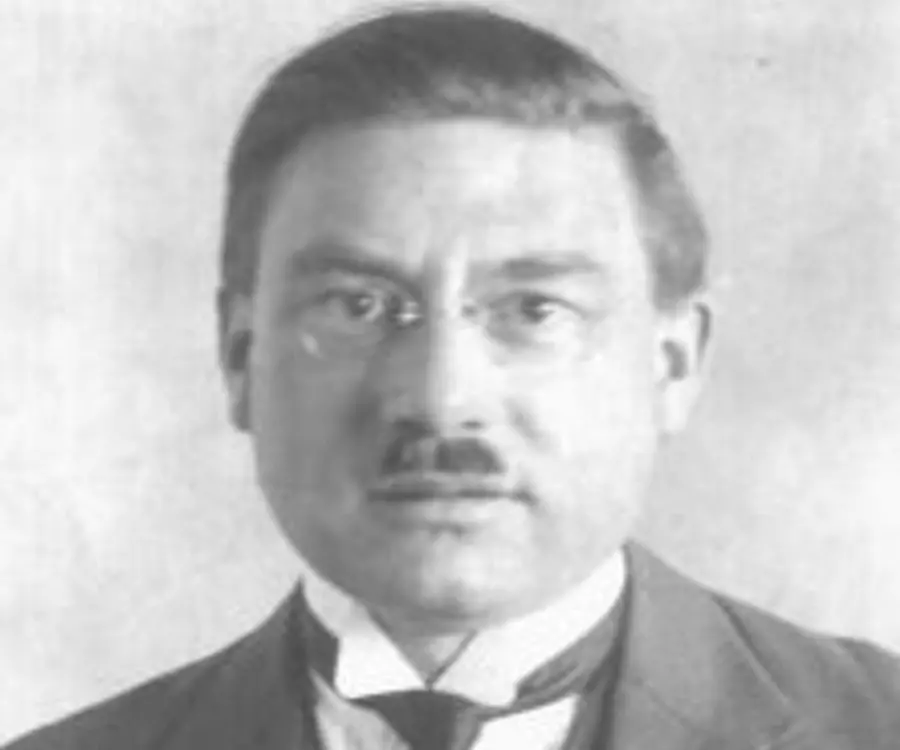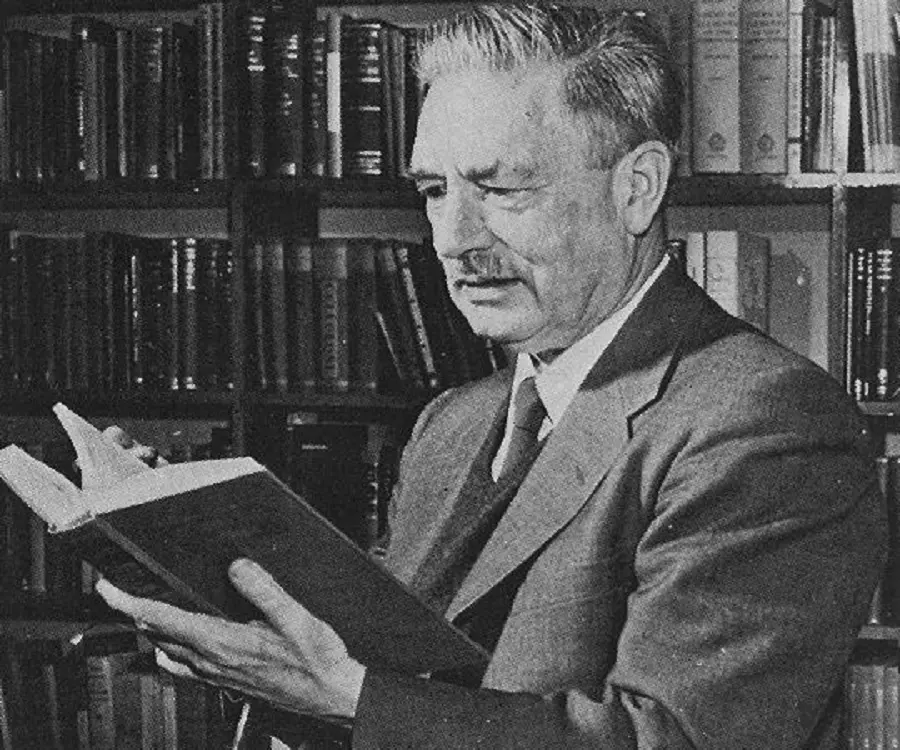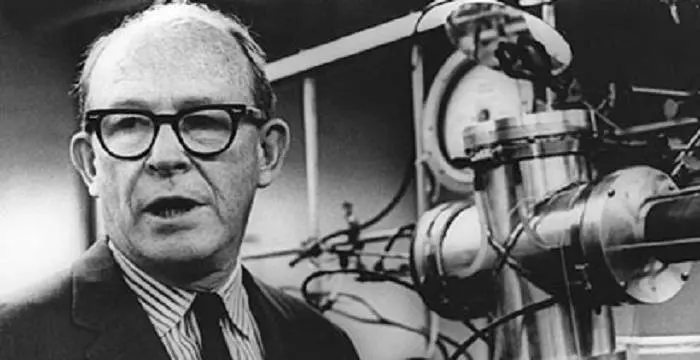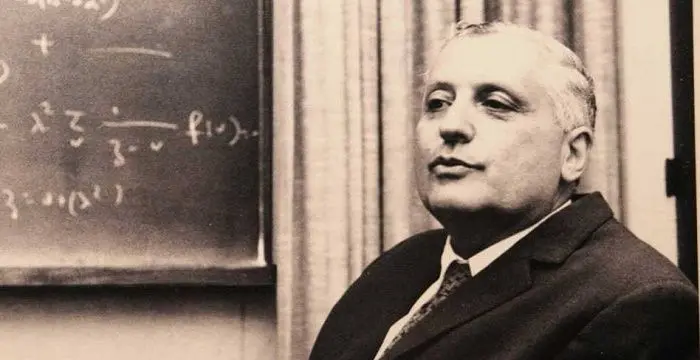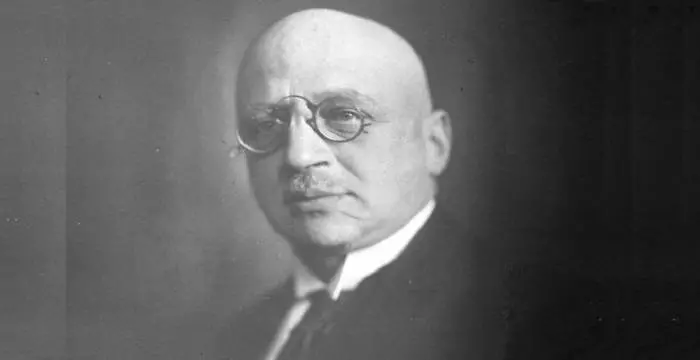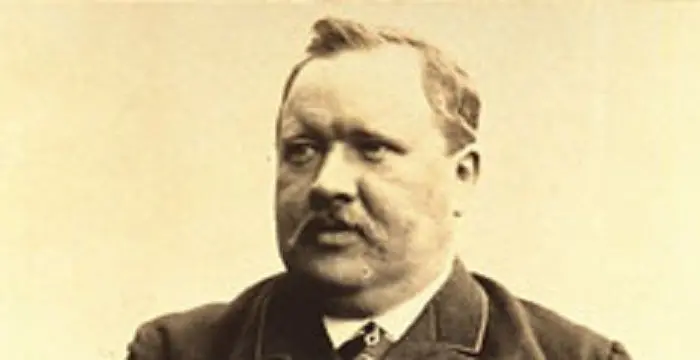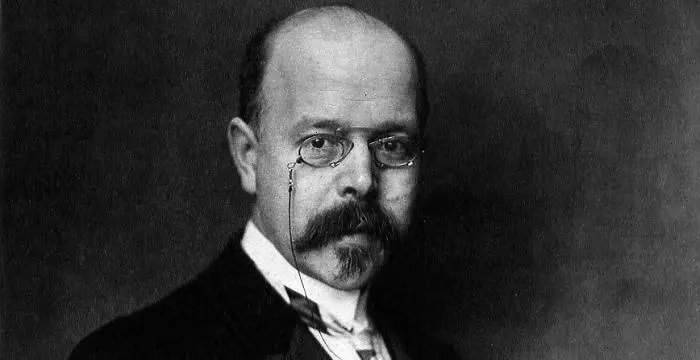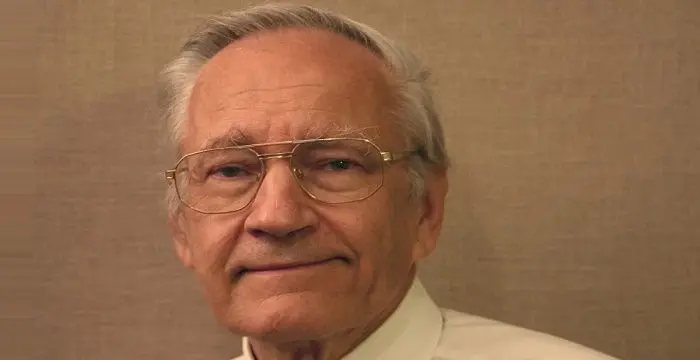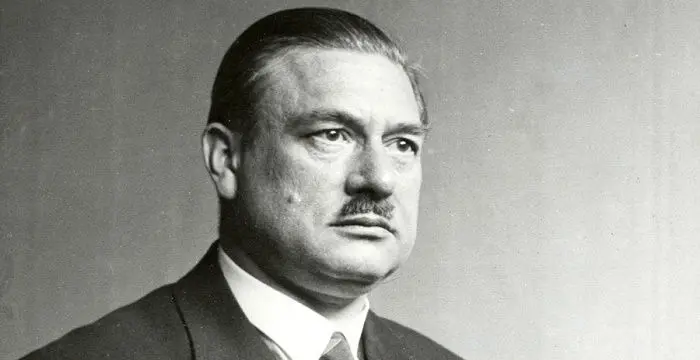
Peter Debye - American-dutch Chemist, Career and Childhood
Peter Debye's Personal Details
Peter Debye a Nobel Prize winning chemist of Dutch origin who developed the ‘Debye Model’
| Information | Detail |
|---|---|
| Birthday | March 24, 1884 |
| Died on | November 2, 1966 |
| Nationality | American |
| Famous | Scientists, Chemists, Physical Chemists, American-dutch Chemist |
| Known as | Peter J. W. Debye |
| Universities |
|
| Birth Place | Maastricht |
| Gender | Male |
| Sun Sign | Aries |
| Born in | Maastricht |
| Famous as | American-Dutch chemist |
| Died at Age | 82 |
Peter Debye's photo
Who is Peter Debye?
Peter Debye was one of the leading physical chemists of his time whose studies in the field of molecular structure helped mankind develop a greater understanding of the subject. Having studied under the likes of great stalwarts like Arnold Sommerfeld, he began his academic career at the ‘University of Munich’ after obtaining a degree in electrical engineering. His prowess in the field marvelled his colleagues and contemporaries alike, when he propounded a simpler explanation of the Planck radiation formula. His reputation received a further boost when he was asked to succeed the legendary theoretical physicist Albert Einstein at the ‘University of Zurich’. It was in Zurich that he made his most remarkable discovery. He studied the structure of covalent bond in great detail and explained it using the concept dipole moment. He even conducted various light scattering experiments with Paul Scherrer and the duo came up with the ‘Debye-Scherrer method’. With the Nazi oppression on the rise he moved to United States where he spent his remaining life teaching and eventually obtained an American citizenship. Recently there have been speculations of his alliance with the Nazis and that he demanded resignation of Jewish employees in the Kaiser Wilhelm Society, while he was the director. Read on to know more about his life and works.
// Famous Scientists
Juliane Koepcke
Juliane Koepcke is a German-Peruvian biologist, who was the lone survivor among the 92 passengers and crew of the ill-fated LANSA Flight 508 that crashed in the Peruvian rainforest on 24 December 1971. Know more about her life in this biography.
Henry Cavendish
Henry Cavendish was a theoretical chemist and physicist, renowned for discovery of hydrogen and calculation of the mass of earth. To know more about his childhood, profile, timeline and career read on
Konstantin Tsiolkovsky
Konstantin Tsiolkovsky was a Russian rocket scientist and a pioneer of astronautics. This biography provides detailed information about his childhood, family, personal life, career, achievements, etc.
Childhood & Early Life
Peter Joseph William Debye was born to William Debije and Maria Reumkens in the Maastricht town of Netherlands.
Since his birth on March 24, 1884, Debye spent most of his childhood in his native town. After completing his secondary schooling, in 1901, Peter went to attend the ‘Technische Hochschule’ (Technical Institute of Aachen) in Germany.
Joseph successfully completed his diploma in electrical engineering in the year 1905 and was recruited as a research assistant in Aachen the same year, where he was mentored by Arnold Sommerfeld.
Career
In 1906, Debye accompanied his mentor who was appointed at the ‘University of Munich’. Working on eddy currents, the budding scientist presented his first paper the following year.
For his doctoral dissertation, Peter studied the pressure resulting in rectangular surface subjected to electromagnetic radiation. He successfully defended his thesis and was awarded a degree in the year 1908.
He continued working as a Privatdozent in Munich until 1911, when he was appointed as a professor of theoretical physics in Zurich. The post at ‘University of Zurich’ was held by renowned physicist Albert Einstein who had moved to Prague.
The year 1912, was a milestone in his career as he made several pioneering discoveries. Through his studies on electric charges in asymmetric molecular systems, he established the relationship between dipole moments, dielectric constant and temperature.
He furthered the concept of specific heat propounded by Einstein, through careful observation of how the phonons contribute to specific heat capacity of a solid substance. The resulting methodology was named ‘Debeye Model’ after the eminent physicist.
Also in 1912, he returned to his homeland, where he accepted an appointment in the ‘University of Utrecht’. After a brief stint in Utrecht, this pioneering physicist moved to Germany the following year, where he taught experimental and theoretical physics to the students of ‘University of Göttingen’.
He studied the effect of thermal movement of atoms on x-ray analysis of crystals and along with Paul Scherrer he strived to achieve a better method to obtain x-ray images of crystals. The duo developed the ‘Debye-Scherrer method’ of deciphering symmetric crystal structures.
In his 1913 publication ‘Interferenz von Rötgenstrahlen und Wärmebewegung’ he described attenuation of x-ray scattering occurring due to thermal motion in condensed matter. His findings culminated in the ‘Debye factor’ which is an indicator of the decrease in intensity of diffraction spots.
The association with Scherrer continued and they established the atomic form factor which described the distribution of electrons in the atom.
Peter moved to ‘Swiss Federal Institute of Technology in Zurich’ in the year 1920, where he was appointed director.
The director along with one of his prodigious student Erich Huckel conducted research on dissociation of electrolytes and in 1923, came up with the ‘Debye–Hückel equation’ an improvised version of the ‘theory of electrical dissociation’, propounded by Arrhenius.
Continuing to study scattering of light, the erudite physicist also elucidated the ‘Compton Effect’ observed in X-rays.
The year 1927, marked his move from Zurich to prestigious ‘University of Leipzig’ where he was granted the professorship of experimental physics.
With Nazi occupation of Germany, he moved to Berlin where he headed the physics department of ‘Kaiser Wilhelm Institute’ (‘Max Planck Institute’) in 1934. Two years later he also accepted a professorship in the ‘Fredrick William University’; a post he held simultaneously while working as the director of the ‘Max Planck Institute’.
Like most scientists of his time, he left Germany and settled in the United States of America. Here he was appointed a professor at the ‘Cornell University’ on 1940. Debye spent the remainder of his academic career at this institute until his retirement twelve years later.
The accomplished scientist continued his research on scattering of light even in retirement; which were now focussed on calculation of weight and size of macromolecules using techniques of light scattering.
Major Works
Debye’s most significant contribution to the field of chemistry was the study of covalent bonds in which regard he developed the ‘Debye Equation’. He correlated the dipole moments to better understand the electric charge distribution existing in an asymmetric molecule
Awards & Achievements
The eminent chemist was honoured with the ‘Nobel Prize in Chemistry’ in 1936, for his pioneering studies on dipole moments and use of x-ray diffraction to decipher the structure of molecules.
In the year 1963, he was presented with the ‘Priestley Medal’ and two years later the ‘National Medal of Science’ was conferred upon this accomplished scientist.
Personal Life & Legacy
Peter exchanged nuptial vows with Mathilde Alberer on April 10, 1913. The couple had two children; a son named Peter Paul Ruprecht and daughter named Maria. Their son went on to become a chemist and even assisted his father in several experiments.
The world saw the last of this eminent scientist on November 2, 1966 when he succumbed to a heart attack. He was interred in USA at the ‘Pleasant Grove Cemetery’.
Trivia
Jurrie Reiding in 2010 speculated that Peter Debye might have been a member of the Secret Intelligence Services of the British Government.
// Famous Chemists
Henry Cavendish
Henry Cavendish was a theoretical chemist and physicist, renowned for discovery of hydrogen and calculation of the mass of earth. To know more about his childhood, profile, timeline and career read on
Walter Kohn
Nobel Laureate Walter Kohn was an Austrian-born American theoretical chemist and physicist. Check out this biography to know about his childhood, life, achievements, works & timeline.
Jabir Ibn Hayyan
Jabir Ibn Hayyan was a medieval era polymath. Check out this biography to know about his life, works and achievements.
Peter Debye's awards
| Year | Name | Award |
|---|---|---|
Other | ||
| 1963 | Priestley Medal | |
| 1930 | Rumford Medal | |
| 0 | Franklin Medal | |
| 1966 | National Medal of Science for Physical Science | |
| 0 | 1936 - Nobel Prize in Chemistry | |
| 0 | 1950 - Max Planck Medal | |
| 0 | 1935 - Lorentz Medal | |
Peter Debye biography timelines
- // 24th Mar 1884 To 1901Since his birth on March 24, 1884, Debye spent most of his childhood in his native town. After completing his secondary schooling, in 1901, Peter went to attend the ‘Technische Hochschule’ (Technical Institute of Aachen) in Germany.
- // 1905Joseph successfully completed his diploma in electrical engineering in the year 1905 and was recruited as a research assistant in Aachen the same year, where he was mentored by Arnold Sommerfeld.
- // 1906In 1906, Debye accompanied his mentor who was appointed at the ‘University of Munich’. Working on eddy currents, the budding scientist presented his first paper the following year.
- // 1908For his doctoral dissertation, Peter studied the pressure resulting in rectangular surface subjected to electromagnetic radiation. He successfully defended his thesis and was awarded a degree in the year 1908.
- // 1911He continued working as a Privatdozent in Munich until 1911, when he was appointed as a professor of theoretical physics in Zurich. The post at ‘University of Zurich’ was held by renowned physicist Albert Einstein who had moved to Prague.
- // 1912The year 1912, was a milestone in his career as he made several pioneering discoveries. Through his studies on electric charges in asymmetric molecular systems, he established the relationship between dipole moments, dielectric constant and temperature.
- // 1912Also in 1912, he returned to his homeland, where he accepted an appointment in the ‘University of Utrecht’. After a brief stint in Utrecht, this pioneering physicist moved to Germany the following year, where he taught experimental and theoretical physics to the students of ‘University of Göttingen’.
- // 1913In his 1913 publication ‘Interferenz von Rötgenstrahlen und Wärmebewegung’ he described attenuation of x-ray scattering occurring due to thermal motion in condensed matter. His findings culminated in the ‘Debye factor’ which is an indicator of the decrease in intensity of diffraction spots.
- // 10th Apr 1913Peter exchanged nuptial vows with Mathilde Alberer on April 10, 1913. The couple had two children; a son named Peter Paul Ruprecht and daughter named Maria. Their son went on to become a chemist and even assisted his father in several experiments.
- // 1920Peter moved to ‘Swiss Federal Institute of Technology in Zurich’ in the year 1920, where he was appointed director.
- // 1923The director along with one of his prodigious student Erich Huckel conducted research on dissociation of electrolytes and in 1923, came up with the ‘Debye–Hückel equation’ an improvised version of the ‘theory of electrical dissociation’, propounded by Arrhenius.
- // 1927The year 1927, marked his move from Zurich to prestigious ‘University of Leipzig’ where he was granted the professorship of experimental physics.
- // 1934With Nazi occupation of Germany, he moved to Berlin where he headed the physics department of ‘Kaiser Wilhelm Institute’ (‘Max Planck Institute’) in 1934. Two years later he also accepted a professorship in the ‘Fredrick William University’; a post he held simultaneously while working as the director of the ‘Max Planck Institute’.
- // 1936The eminent chemist was honoured with the ‘Nobel Prize in Chemistry’ in 1936, for his pioneering studies on dipole moments and use of x-ray diffraction to decipher the structure of molecules.
- // 1940Like most scientists of his time, he left Germany and settled in the United States of America. Here he was appointed a professor at the ‘Cornell University’ on 1940. Debye spent the remainder of his academic career at this institute until his retirement twelve years later.
- // 1963In the year 1963, he was presented with the ‘Priestley Medal’ and two years later the ‘National Medal of Science’ was conferred upon this accomplished scientist.
- // 2nd Nov 1966The world saw the last of this eminent scientist on November 2, 1966 when he succumbed to a heart attack. He was interred in USA at the ‘Pleasant Grove Cemetery’.
// Famous Physical Chemists
Willard Libby
Willard Frank Libby was an American physical chemist who was awarded the ‘Nobel Prize’ in Chemistry in 1960. This biography profiles his childhood, life, career, research, achievements and timeline.
Ilya Prigogine
Ilya Prigogine was a Russian-born Belgian physical chemist who was awarded the Nobel Prize for Chemistry in 1977. This biography of Ilya Prigogine provides detailed information about his childhood, life, achievements, works & timeline.
Fritz Haber
Fritz Haber was a German chemist who won the 1918 Nobel Prize in Chemistry for the synthesis of ammonia from its elements. Check out this biography to know about his childhood, life, achievements, works & timeline.
Svante Arrhenius
Svante Arrhenius was a renowned Swedish scientist who is regarded as father of modern day physical chemistry. To know more about his childhood, profile, career and timeline read on
Walther Nernst
Walther Hermann Nernst was a German scientist who won the 1920 Nobel Prize in Chemistry for his contribution to the field of thermochemistry.
Richard R. Ernst
Richard Robert Ernst is a Swiss chemist, researcher and teacher who won the prestigious Nobel Prize in Chemistry in 1991. Check out this biography to know about his childhood, life, achievements, works & timeline.
Peter Debye's FAQ
What is Peter Debye birthday?
Peter Debye was born at 1884-03-24
When was Peter Debye died?
Peter Debye was died at 1966-11-02
Where was Peter Debye died?
Peter Debye was died in Ithaca
Which age was Peter Debye died?
Peter Debye was died at age 82
Where is Peter Debye's birth place?
Peter Debye was born in Maastricht
What is Peter Debye nationalities?
Peter Debye's nationalities is American
What was Peter Debye universities?
Peter Debye studied at RWTH Aachen University, Ludwig Maximilian University of Munich
What is Peter Debye's sun sign?
Peter Debye is Aries
How famous is Peter Debye?
Peter Debye is famouse as American-Dutch chemist
